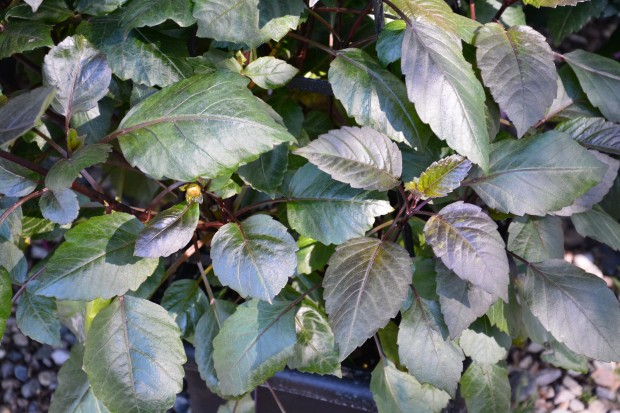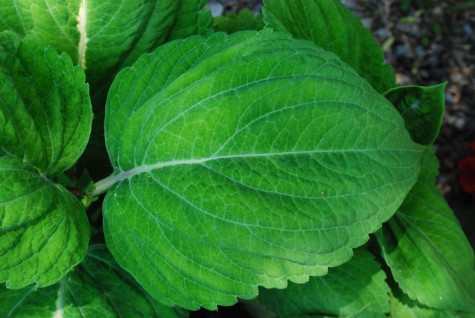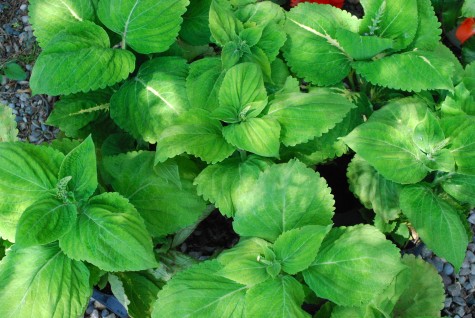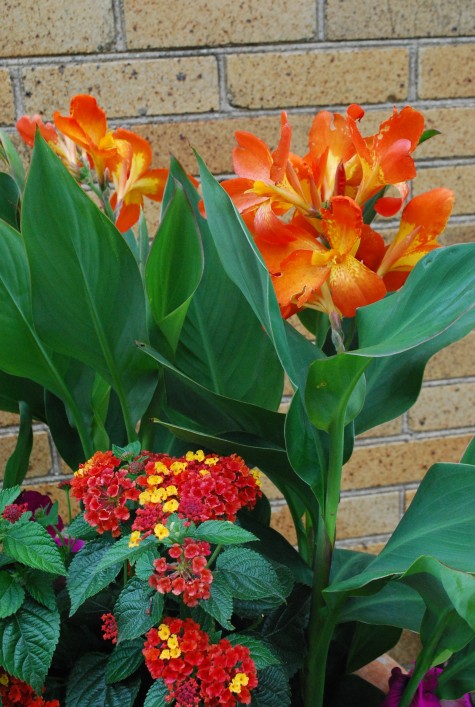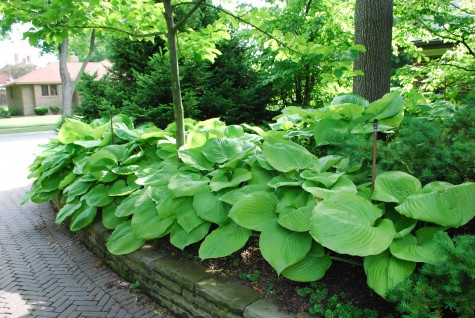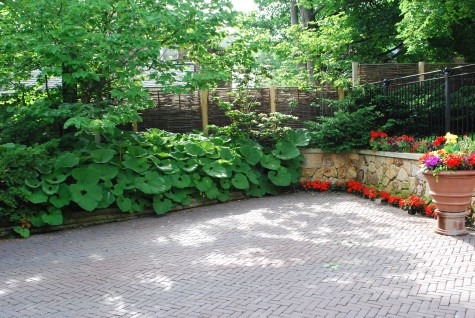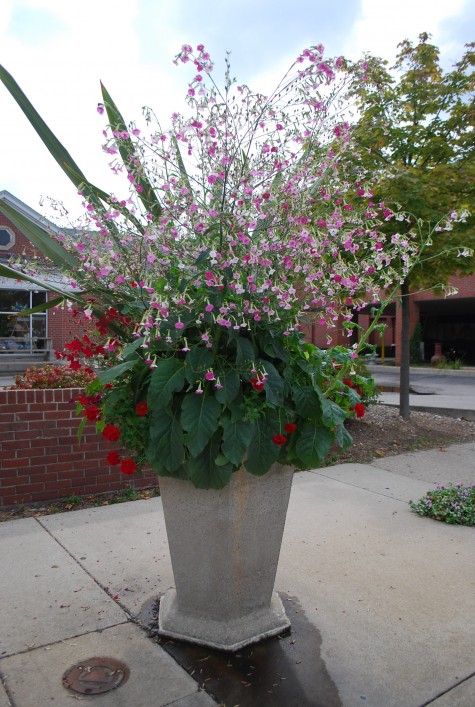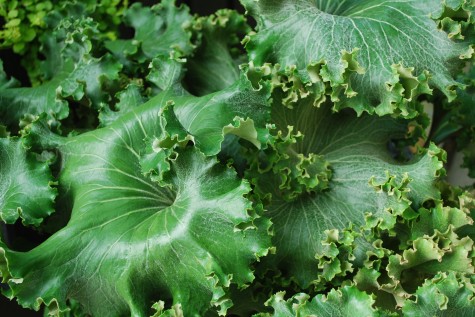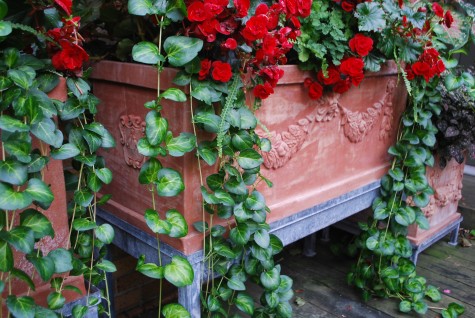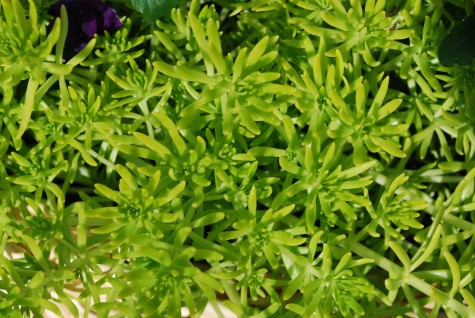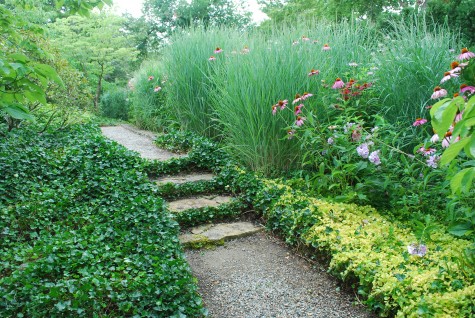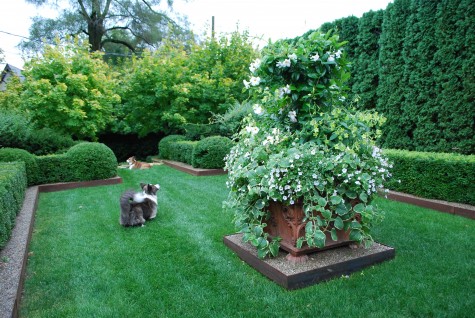 The success of this window box has little to do with the flowers. The color of the foliage is the story. The blue green foliage makes the carmine purple petunias pop. Though I have a big love for flowers, flowers come with green leaves standard issue.. As in pale green, medium green, dark green, yellow green, blue green, black green-you get the idea. Consider the leaf color when designing containers. A container garden is a landscape in miniature. When the spaces are small, every move you make matters. Every choice makes waves.
The success of this window box has little to do with the flowers. The color of the foliage is the story. The blue green foliage makes the carmine purple petunias pop. Though I have a big love for flowers, flowers come with green leaves standard issue.. As in pale green, medium green, dark green, yellow green, blue green, black green-you get the idea. Consider the leaf color when designing containers. A container garden is a landscape in miniature. When the spaces are small, every move you make matters. Every choice makes waves.
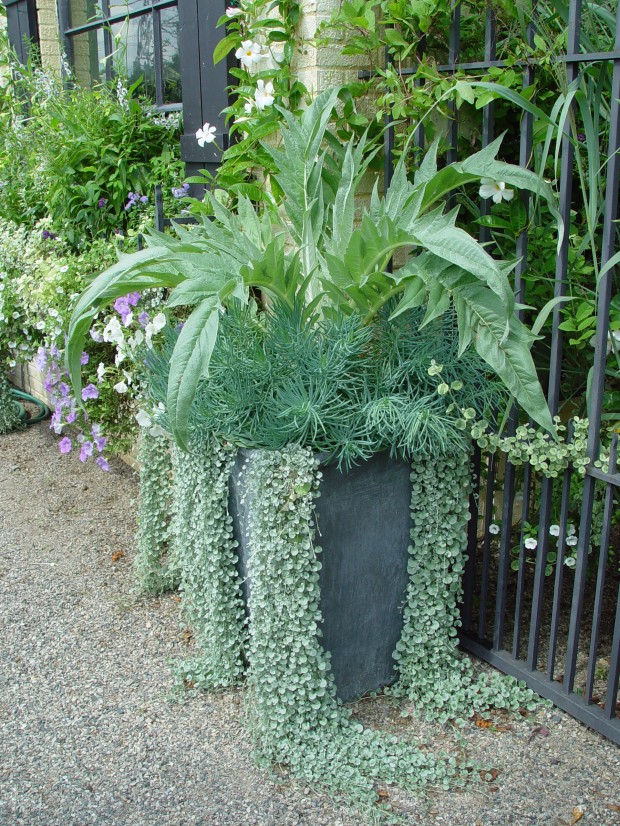 This container has nothing to say about flowers either. It has a lot to say about texture. It has even more to say about a particular shade of green. A great container is deliberate in exploring the relationships between all of the colors involved.
This container has nothing to say about flowers either. It has a lot to say about texture. It has even more to say about a particular shade of green. A great container is deliberate in exploring the relationships between all of the colors involved.
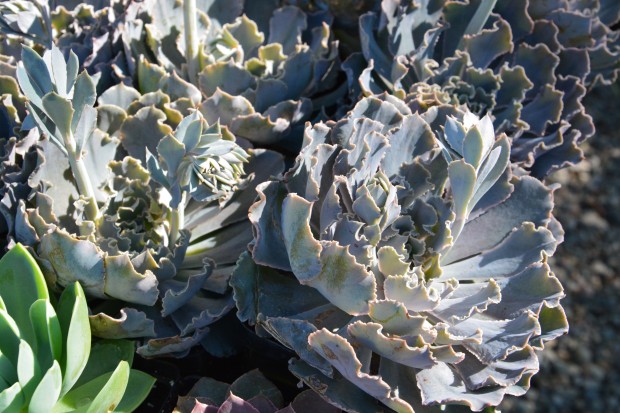 A succulent is not my most favorite plant. But this kind of green is available in few other plants. Not every plant in a container has to be a favorite. But every plant should be chosen for what it contributes to the mix.
A succulent is not my most favorite plant. But this kind of green is available in few other plants. Not every plant in a container has to be a favorite. But every plant should be chosen for what it contributes to the mix.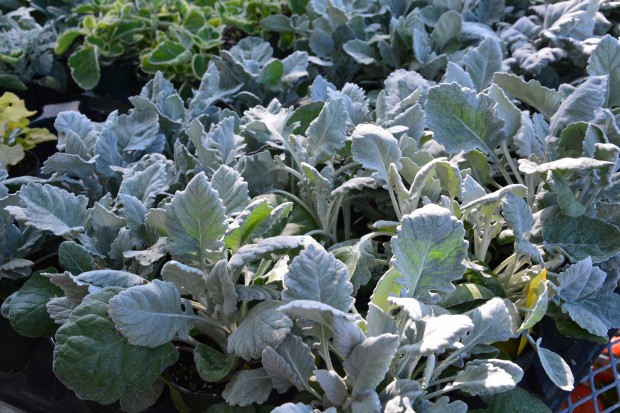 Grey foliaged plants can inform any color scheme. I am a big fan of the Cirrus dusty miller. The felted gray leaves look great with pink, yellow, purple , or white flowers. Gray green foliage in a container planting can cool off a hot color scheme. Interested in a cool and serene scheme? Choose cool green foliage over yellow green foliage.
Grey foliaged plants can inform any color scheme. I am a big fan of the Cirrus dusty miller. The felted gray leaves look great with pink, yellow, purple , or white flowers. Gray green foliage in a container planting can cool off a hot color scheme. Interested in a cool and serene scheme? Choose cool green foliage over yellow green foliage.
 I have never been so much a fan of gray in the landscape. By itself, gray recalls rainy days, and not much else. But gray foliage in combination with other flower colors shines. Gray green foliage and white flowers-classic. Gray green foliage and pale yellow-worth a look. Gray green foliage and red violet petunias-a happening. Gray, white and cool green-a tri-color container color combination is rhythmic.
I have never been so much a fan of gray in the landscape. By itself, gray recalls rainy days, and not much else. But gray foliage in combination with other flower colors shines. Gray green foliage and white flowers-classic. Gray green foliage and pale yellow-worth a look. Gray green foliage and red violet petunias-a happening. Gray, white and cool green-a tri-color container color combination is rhythmic.
 Medium green is a workhorse of a foliage color.
Medium green is a workhorse of a foliage color.

Vinca vine is a most ordinary and widely available trailing container plant. Give it another look. This particular shade of green variegated with so pale cream yellow edges may endow your container planting with just the right shade of green.
 dieffenbachia with white polka dot plant and lime licorice
dieffenbachia with white polka dot plant and lime licorice
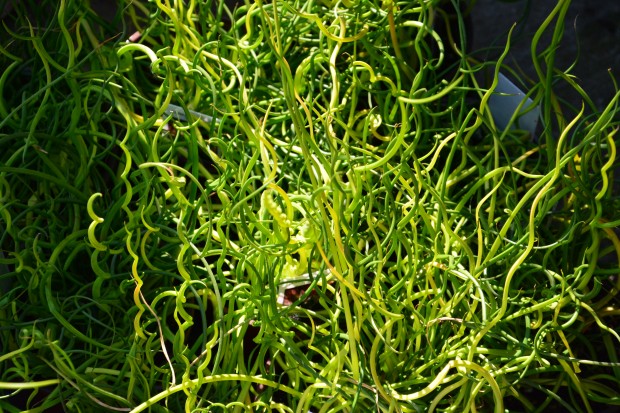 Have a love for lime green? This shade of green is electric. Should you have the idea to make a big splash, lime green foliage will make your hot pink and orange flowers glow. An orange lantana standard will be lit from underneath, given an under planting of creeping jenny or lime licorice. or this crazy corkscrew rush.
Have a love for lime green? This shade of green is electric. Should you have the idea to make a big splash, lime green foliage will make your hot pink and orange flowers glow. An orange lantana standard will be lit from underneath, given an under planting of creeping jenny or lime licorice. or this crazy corkscrew rush.
 The new growth of almost every plant in the spring is one shade of lime green or another. If you have a mind to celebrate the opening of the garden all summer long, lime green plants are happy to oblige.
The new growth of almost every plant in the spring is one shade of lime green or another. If you have a mind to celebrate the opening of the garden all summer long, lime green plants are happy to oblige.
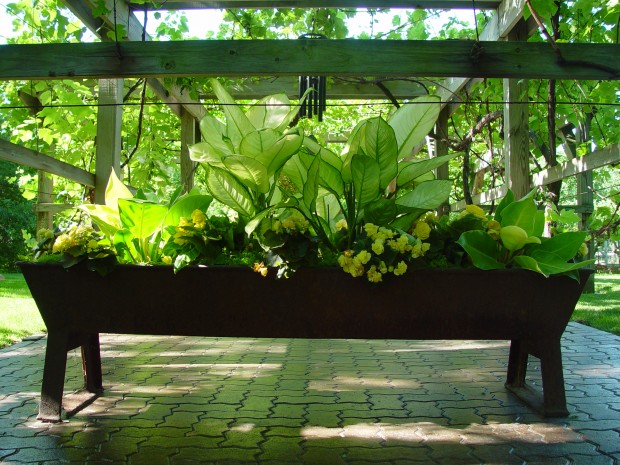 pale green dieffenbachia will light up a shady spot.
pale green dieffenbachia will light up a shady spot.
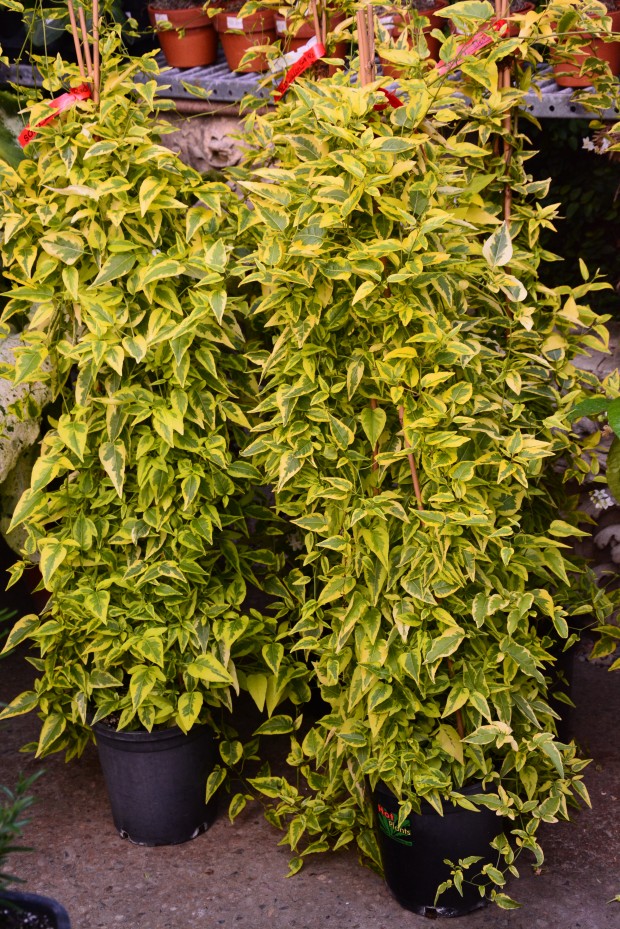 lime green variegated potato vine sizzles.
lime green variegated potato vine sizzles.
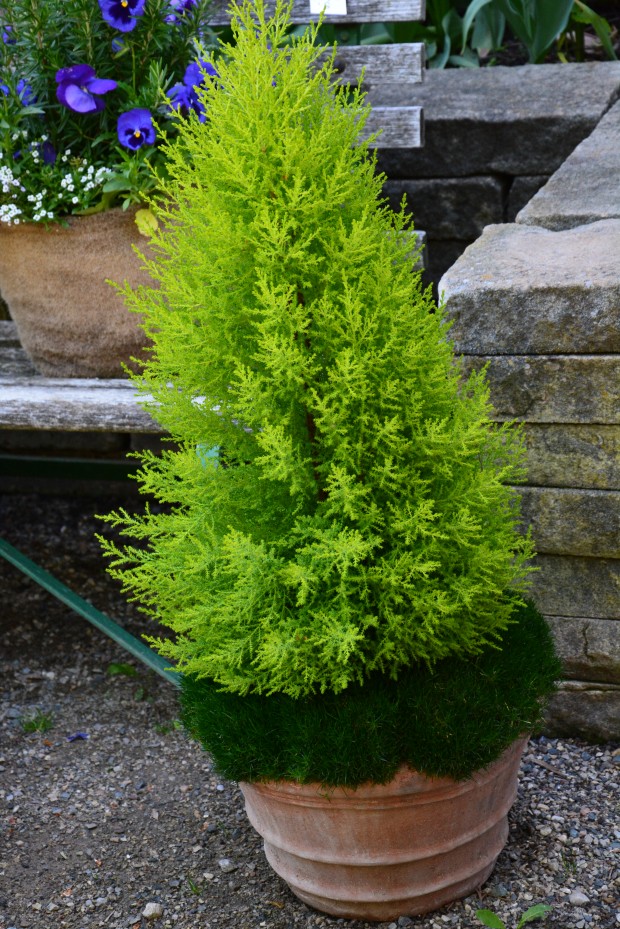 lemon cypress
lemon cypress
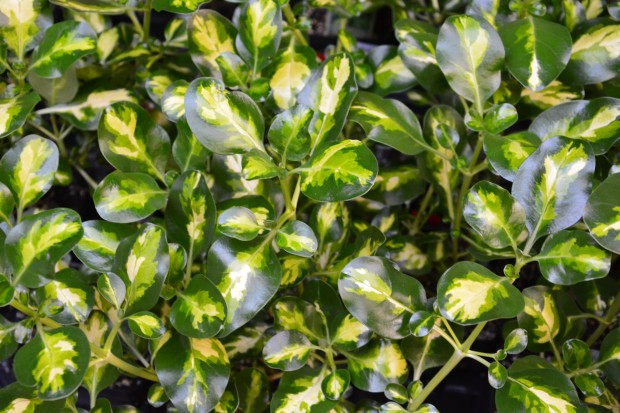 coprosma is a lime variegated plant grown for its glossy splashy foliage. it grows 2-3 feet tall, and will do in sun and part sun.
coprosma is a lime variegated plant grown for its glossy splashy foliage. it grows 2-3 feet tall, and will do in sun and part sun.
